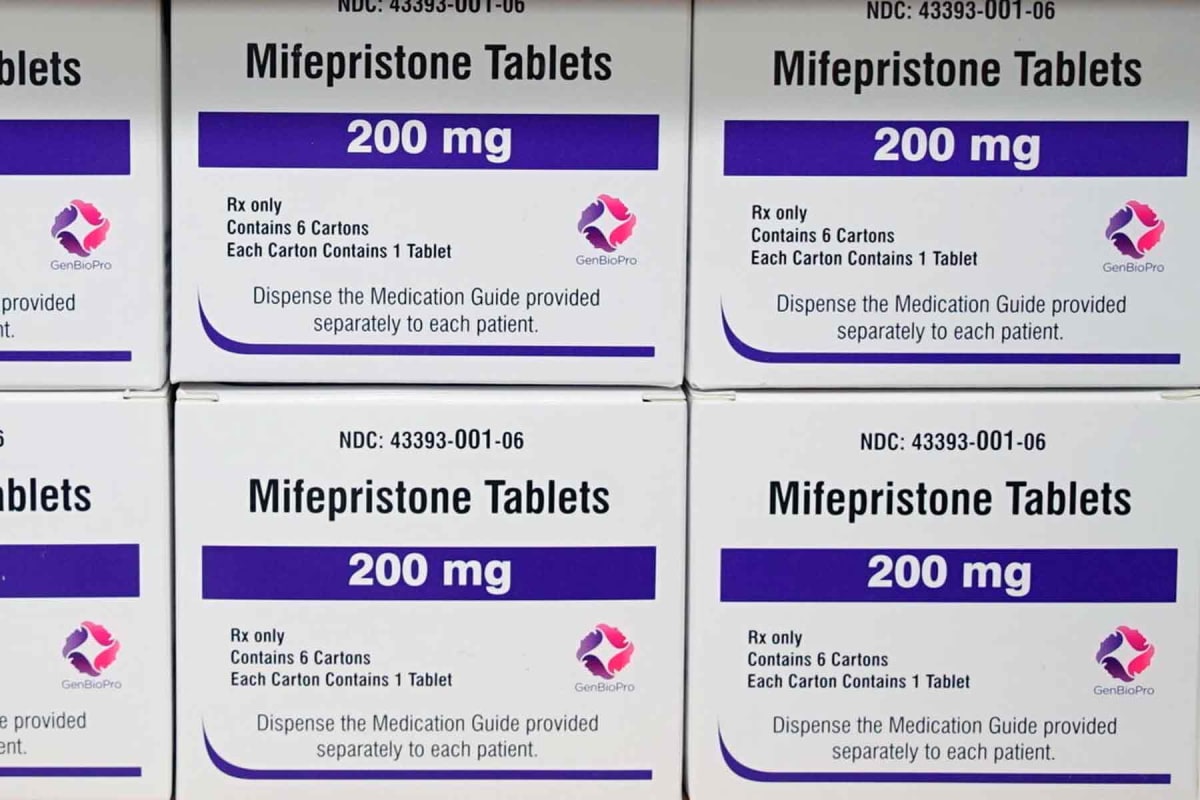
How much does Mifepristone cost?
How much does Mifepristone cost?
$30 – $200 cost from online clinic or pill website
$300 – $800 cost at an in-person clinic
Mifepristone and Misoprostol tablets price
Mifepristone costs $300 to $800 without insurance from an in-person clinic or $30 to $200 from an online clinic or pill website. With insurance, prices can be as low as $5 to $30, depending on your insurance provider, co-pay, and which pharmacy you choose.
Both online and in-person options include both Mifepristone and Misoprostol in their pricing, as these medications are prescribed together for medical abortions.
| Provider | Average cost (without insurance) |
|---|---|
| In-person clinic | $300 – $800 |
| Online clinic | $50 – $200 |
| Pill website | $30 – $150 |
| Planned Parenthood | $400 – $700 |
In-person clinic
Mifepristone costs $300 to $800 on average without insurance at an in-person clinic. This cost often includes additional services, such as in-person counseling, a physical exam, and immediate medical support if needed. Some clinics also offer follow-up care as part of their package.
Online clinic
Prices for Mifepristone through an online clinic range from $50 to $200. This price typically includes a virtual consultation with a healthcare provider. Online clinics may also offer additional support throughout the process. However, it's crucial to ensure you're using a reputable and licensed provider when choosing this option.
Pill website
Several websites sell an MTP Kit containing Mifepristone and Misoprostol tablets for $30 to $150. These sites don't require a prescription, don't require you to upload a copy of your photo ID, and ship to addresses throughout the U.S.
However, the websites don't offer a medical consultation, and the FDA does not regulate or inspect their pills.
Planned Parenthood
At Planned Parenthood centers, prices range from $400 to $700 on average without insurance for an abortion pill kit containing Mifepristone and Misoprostol tablets. Prices depend on the location, and costs may be lower if your health insurance covers abortions.
What is Mifepristone?
Mifepristone is a generic medication used for medical abortions during the first 10 weeks of pregnancy. It works by blocking the hormone progesterone, which is necessary for a pregnancy to continue. Doctors typically prescribe Mifepristone in combination with Misoprostol.
Mifepristone is also known as the abortion pill or Plan C pill. The FDA approved the brand-name version Mifeprex in 2000, and millions of people worldwide have used the drug for safe and effective early pregnancy termination.
What does Mifepristone do?
Mifepristone works to terminate a pregnancy by:
Blocking progesterone receptors
Softening and dilating the cervix
Increasing uterine contractions
When used in combination with Misoprostol, Mifepristone is highly effective for ending early pregnancies. The medication detaches the pregnancy from the uterine wall and helps the body expel the tissue. This process mimics a natural miscarriage and is generally considered safe when used under proper medical supervision.

FAQs about Mifepristone
Does Mifepristone cause bleeding?
Yes, Mifepristone typically causes bleeding similar to a normal or heavy menstrual period. This is a normal part of the process as the pregnancy tissue is expelled from the uterus. Bleeding or spotting typically lasts an average of 9 to 16 days but may last up to 30 days in some individuals.
It's important to monitor the bleeding and contact a healthcare provider if it becomes excessively heavy or prolonged.
How long does it take for Mifepristone to work?
Mifepristone begins working immediately, but the full effects usually occur within 24 to 48 hours when followed by Misoprostol as directed. The process of expelling the pregnancy tissue typically starts within 4 to 5 hours after taking Misoprostol and can last several hours.
How long does Mifepristone stay in your system?
Mifepristone stays in your system for 5 to 20 days. However, its effects on pregnancy are usually complete within 24 to 48 hours.
How long do Mifepristone side effects last?
Some side effects of Mifepristone, such as cramping and bleeding, last for a few days to two weeks. Other common side effects like nausea, vomiting, and diarrhea typically subside within 24 to 48 hours. Some individuals may experience light bleeding for up to a month.
Does Mifepristone cause contractions?
Yes, Mifepristone can cause mild to moderate uterine contractions. These contractions become more pronounced after you take Misoprostol 24 to 48 hours later as the second step in the medical abortion process.
The contractions are necessary to expel the pregnancy tissue from the uterus. The intensity of contractions can vary from person to person, ranging from mild cramping to strong period-like pains.
Can I eat after taking Mifepristone?
Yes, you can eat normally after taking Mifepristone. Doctors recommend eating light, easily digestible foods to help manage any nausea you might experience. Some healthcare providers suggest avoiding fatty or heavy foods that might upset your stomach, especially in the hours leading up to and following the administration of Misoprostol.
Is Mifepristone the same as Plan B?
No, Mifepristone is not the same as Plan B. Plan B (levonorgestrel) is an emergency contraception that prevents pregnancy, while Mifepristone terminates an existing early pregnancy.
Plan B works by delaying or preventing ovulation and must be taken within 72 hours of unprotected sex. Mifepristone can be used up to 10 weeks into a pregnancy and works by blocking progesterone and inducing uterine contractions.
Where to get Mifepristone
You can get Mifepristone from:
Licensed healthcare providers
Planned Parenthood centers
Online clinics and telemedicine providers
Pill websites
Abortion clinics
Community networks
It's crucial to obtain Mifepristone from a reputable source to ensure its safety and effectiveness. Always consult with a healthcare provider before using Mifepristone or any medication for abortion.
The availability and legality of Mifepristone vary by location, so it's essential to check local regulations and consult with a healthcare professional for the most accurate and up-to-date information.